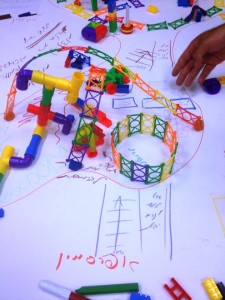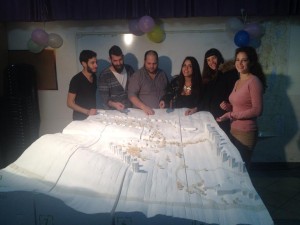Building Community Solidarity through Themed Playgrounds
How would you like your local public playground? Aimed at big or little kids? With a pirate theme or dinosaurs or space travel?
Can you really have a playground made to order? Well, yes. During the spring and summer months we were involved in community-building processes that aimed to do just that – build community by building a playground. We were approached by the Jerusalem Municipality to lead processes in Gilo, Ir Ganim, Givat Hamivtar and Shuafat. With funding from the Bloomberg Philanthropies, established by former New York City Mayor Michael Bloomberg, we set to work.
The processes were led by the staff of the different community councils, alongside Municipality officials. Before meeting with the residents, these process leaders met to set joint project goals and ensure that everyone was on the same page. (Indeed, ‘informed decision-making’ is a key component of the principles of participatory democracy.) Different concepts were reviewed – what exactly are themed playgrounds, the rough budgets set aside for building the playgrounds, the timeline, safety standards, types of potential equipment, examples of themed playgrounds from around the world for inspiration, and more. We then set out to mentor the neighborhoods separately, as all residents in each community were invited to sessions that included brainstorming for different themes, coming to agreement on what residents wanted in a playground, and more. After both residents and community and planning professionals put their ideas on paper (illustrated in the pictures), suggestions were passed along to the landscape architects contracted to design the playgrounds. In Gilo residents chose to establish a “Cub Park” (for example, trying to mimic characteristic movements of different animals in the park, such as, but not necessarily including, crawling like a snake, climbing like a monkey, jumping like a kangaroo, etc.). Residents in Givat Hamivtar chose “Man and his World;” in Ir Ganim, “Touching the Sky;” and in Shuafat, “Space Park.” The architects are now working on specific designs and are scheduled to present these designs to the neighborhoods very soon.
We came to this project as a result of our in-depth work with residents of Kiryat Hayovel and Kiryat Menachem / Ir Ganim in the Asbestonim Wadi, which runs between Kiryat Hayovel and Kiryat Menachem / Ir Ganim. We can’t wait to see how these new playgrounds turn out!







